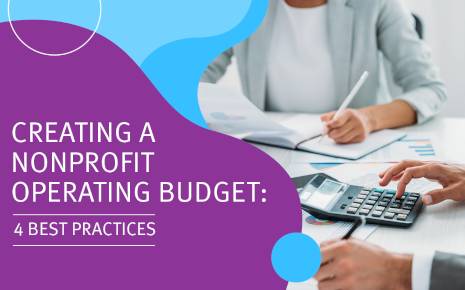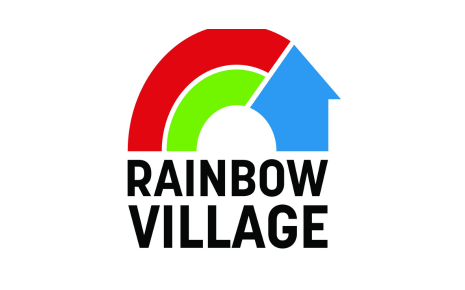In many ways, a nonprofit is like a small business. While businesses try to increase sales and make a profit, nonprofits attempt to collect donations and drive support for their causes. In both cases, data allows you to make more informed decisions that boost incoming revenue.
However, you can't make reliable decisions if your data isn't accurate, complete, and up-to-date. Comprehensive data can give you the confidence to make split-second, informed decisions that lead to lasting growth.
In this article, we'll provide tips for improving your organization's data quality. As a result, you'll glean better insights from your data, enabling you to reach your fundraising goals and build lasting relationships with your supporters.
1. Invest in data management tools.
There are so many different kinds of data your nonprofit can collect. NXUnite by Nexus Marketing recommends collecting and storing a combination of the following data types:
- Constituent information, such as name and age
- Giving data, such as giving amount and frequency
- Campaign data, such as conversions and revenue
- Financial data, such as income and expenses
- Marketing metrics, such as ad performance and website key performance indicators (KPIs)
With large volumes of sensitive information at your disposal, it's crucial to store this data in a secure place. That way, you can organize your data and protect it against breaches and other security threats.
Find a constituent relationship management platform (CRM), database, or data management platform that fits your organization's needs. Then, make sure all of your data is in one place. Migrate any data left in spreadsheets or physical forms to the platform for easy and secure access.
When looking for a data management solution, choose a platform that integrates with your existing tech stack for smooth data transfers and enhanced insights. For example, you may choose a platform that integrates with your website so that your supporter information and website analytics combine to inform your website marketing strategy.
2. Implement data hygiene procedures.
Data hygiene is the process of keeping your data clean and error-free. With a clear routine for assessing and maintaining data hygiene, you can streamline the process and ensure your CRM is filled with high-quality data.
To develop your data hygiene routine, follow these steps:
- Audit your database. Start by taking stock of your current data. With an audit, you can determine which data is unnecessary and identify problem areas in your database. For instance, you may find that you have duplicate entries or missing contact information for key supporters.
- Resolve inaccuracies. Once you've identified any issues, it's time to correct them. Ways to resolve common database problems include removing information for supporters on 'Do Not Mail' and 'Do Not Call' lists and merging duplicate records.
- Create data entry rules. Prevent future inaccuracies by developing rules for data entry. For example, you may either use address abbreviations such as 'St' and 'Rd' or spell them out as 'Street' and ‘Road.’
With a dedicated data hygiene routine in place, it's time to get your team on board. Make sure each team member understands how to properly input and organize your nonprofit's data. You may create a document with your organization's data hygiene procedures or meet with your team to answer any questions.
3. Request a data quality report.
While you can assess data quality on your own to some degree, it's usually best to turn to the experts. A data provider can produce a data quality report that dives deeper into your data's accuracy, completeness, and consistency.
A data quality report can show you information such as:
- If supporters' addresses are accurate and how many addresses need to be updated
- The amount of confirmed phone numbers and whether updates are available
- The number of deceased individuals in your database
- The number of confirmed dates of birth and whether updates are available
- The number of email addresses in your database that can be updated
A data quality report can tell you if you're missing valuable supporter information. For instance, you may have the phone numbers of some of your supporters but not their mailing addresses. A data provider can identify this gap and then append the missing addresses.
4. Conduct a data append.
Through your audit or data quality report, you may notice you're missing key supporter information. To resolve this issue, conduct a data append.
A data append involves enriching your database with information from third-party sources. This data helps you get in contact with your supporters and get a fuller picture of their interests, needs, and preferences.
The types of data you can append may include:
- Demographics
- Phone numbers
- Employment data
- Lifestyle information
- Nonprofit engagement history
- Net worth
- Income
For example, you may append nonprofit engagement history, net worth, and income data to identify a supporter's potential to contribute a major gift. This information can indicate giving capacity and propensity, allowing you to prioritize reaching out to donors or as Convergent Nonprofit Solutions refers to them, investors with the highest major gift potential.
5. Survey your supporters.
Ask supporters directly for information about themselves and their experiences with your nonprofit. Since this data comes right from your supporters, it's timely and highly accurate.
According to Deep Sync, survey data falls under the category of zero-party data. As opposed to first-party data from your relationships with supporters and third-party data from outside sources, zero-party data is information supporters voluntarily share with your nonprofit.
By offering supporters the opportunity to share their feedback, you can learn which parts of your mission supporters are most passionate about so you can offer them relevant opportunities. For instance, an animal shelter may find that some supporters are interested in volunteering with cats and dogs in the shelter while others prefer to assist with animal rescue efforts.
Additionally, surveys allow you to identify supporters' communication preferences so you can contact them accordingly. When you reach supporters through their preferred channels, they're more likely to respond and continue engaging with your organization.
Whether you're trying to enhance your fundraising results, increase advocacy for your cause, or recruit volunteers, data can help you reach your goals. These tips will ensure your data is actionable and representative of your supporter's demographics, preferences, and interests, allowing you to reach them more effectively.






